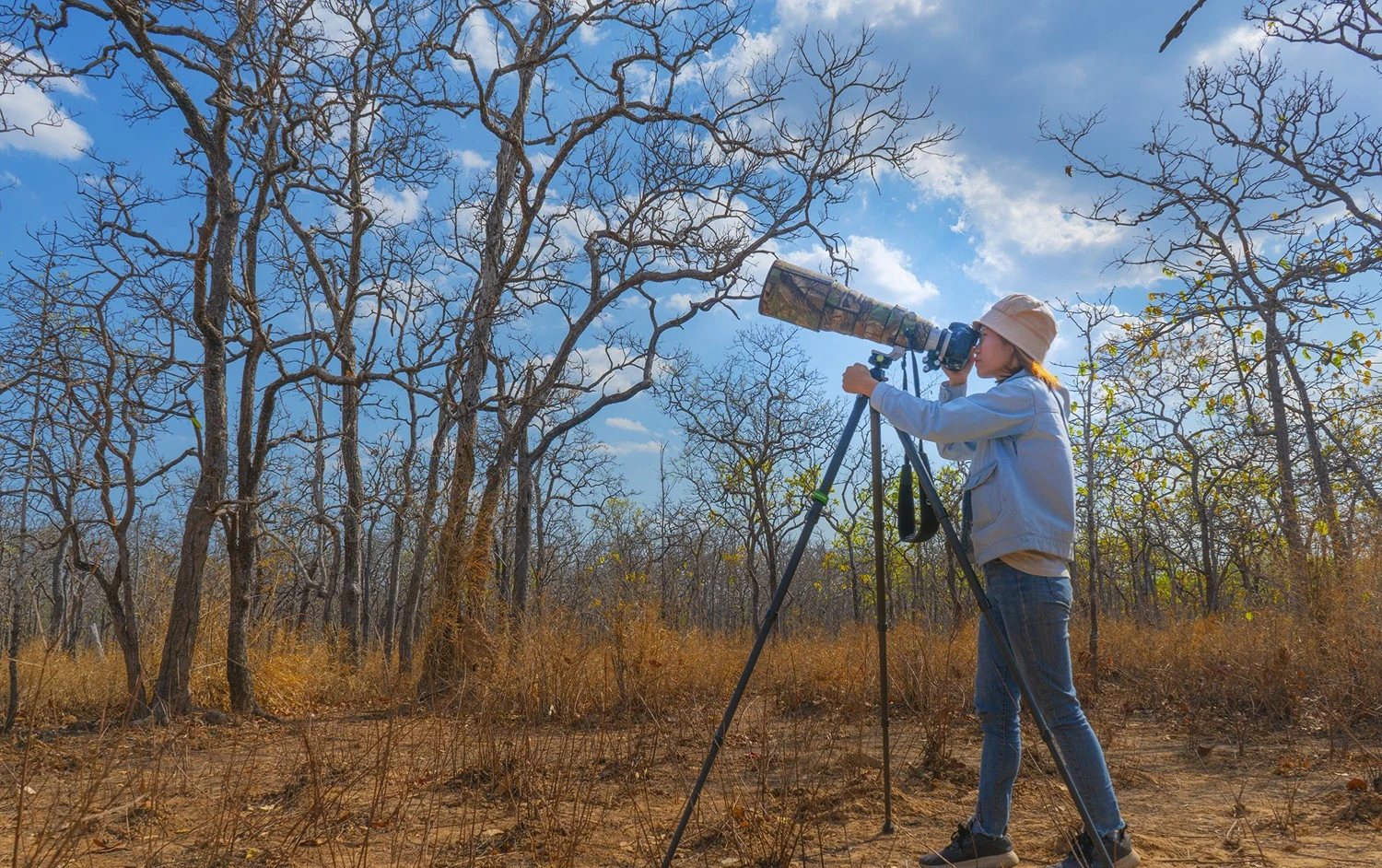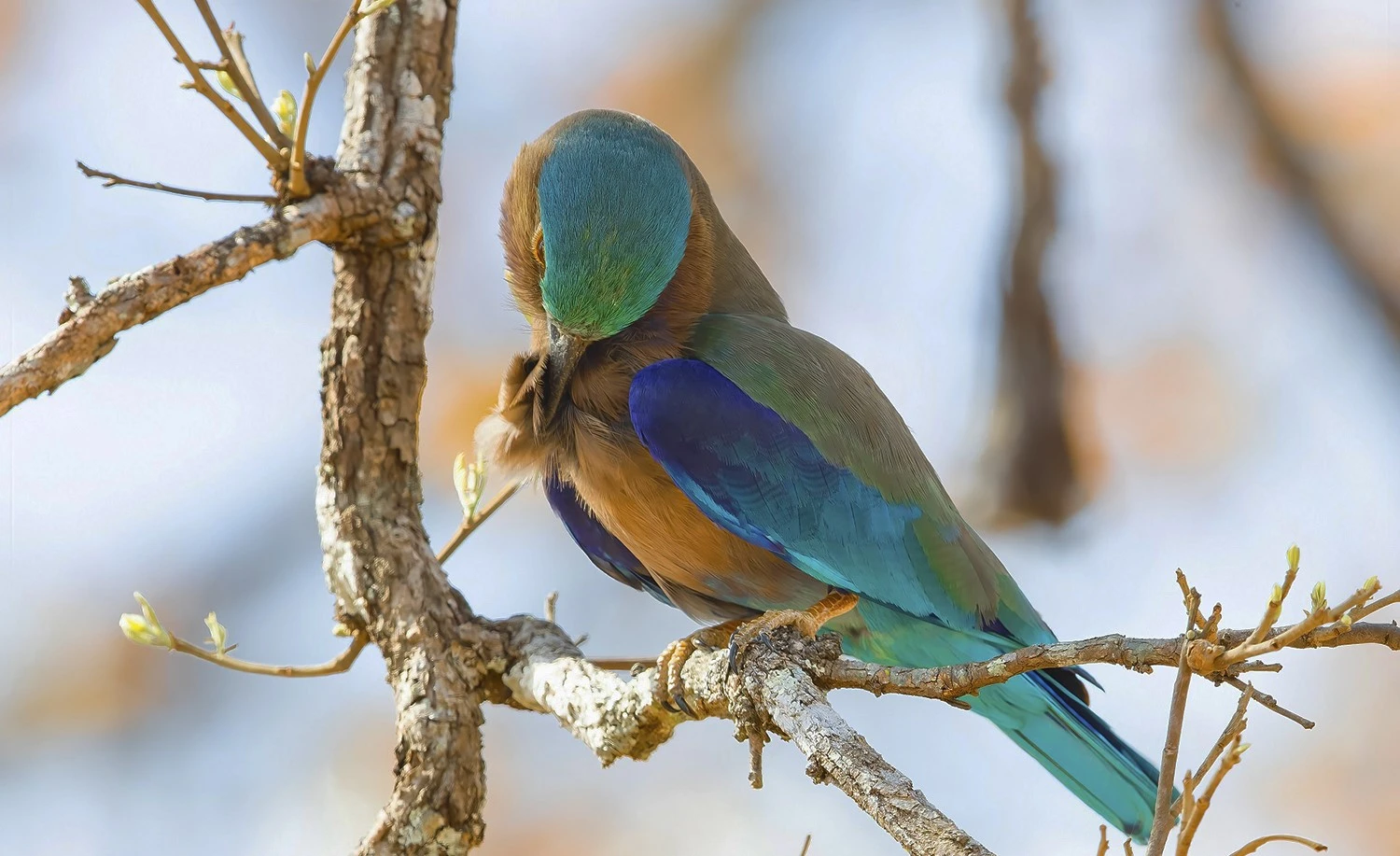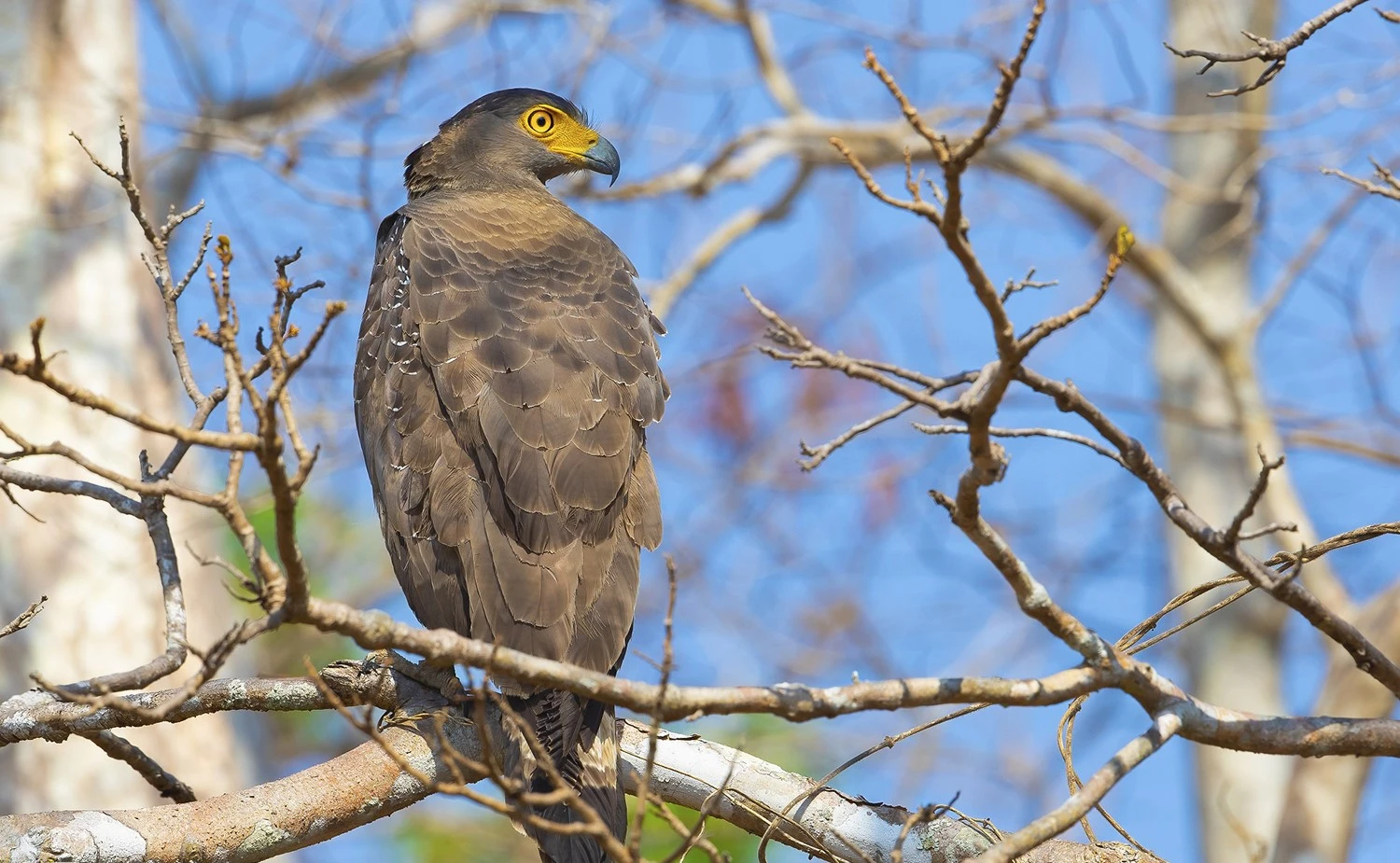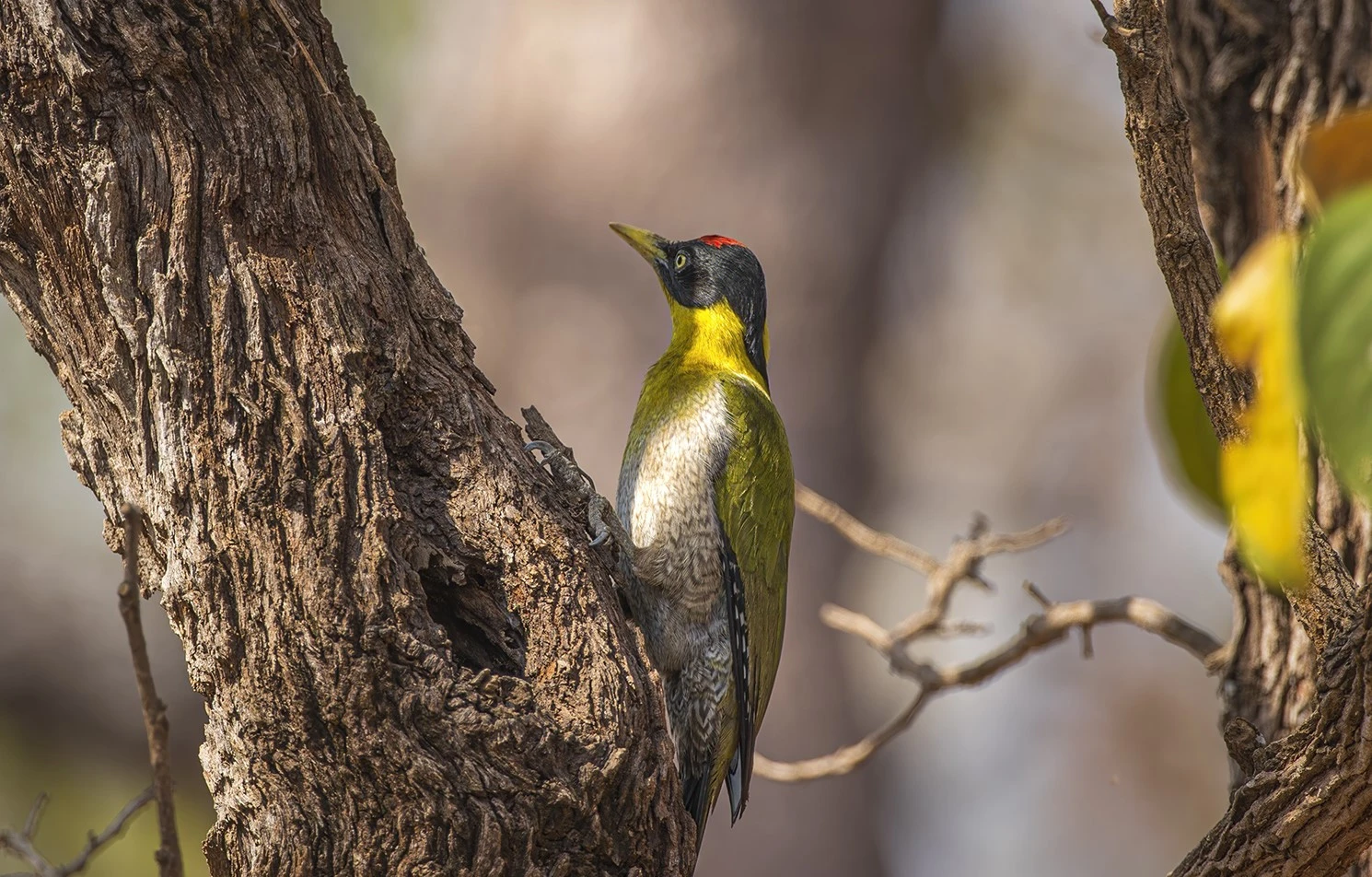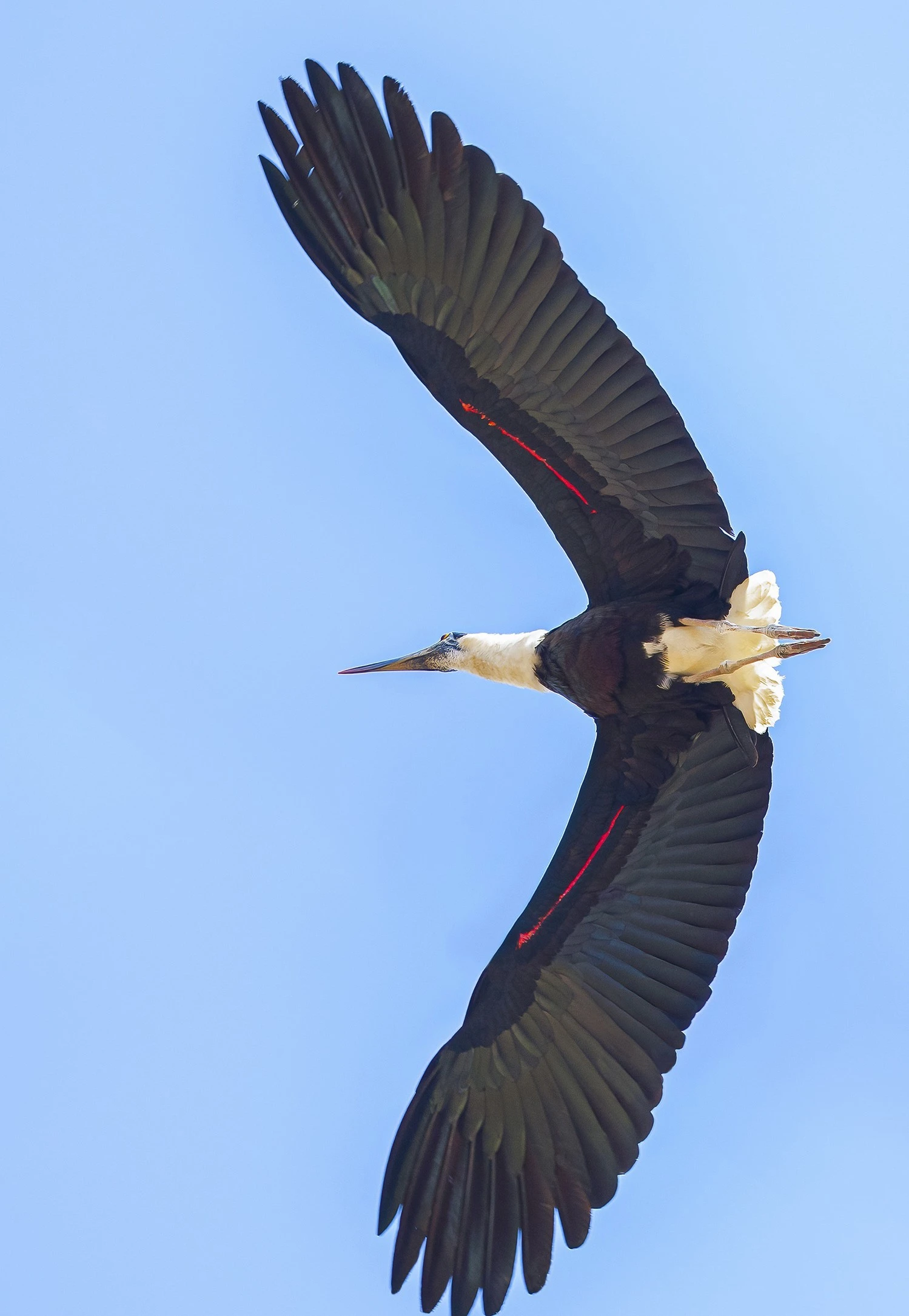Yok Don National Park is located on relatively flat terrain, with an average altitude of 200 m above sea level, at km38 of provincial road 1, Krong Na commune, Buon Don district, about 40 km north of Buon Ma Thuot city.

Image: Vo Rin
There are more than 12 forest ranger stations in the National Park, so the conservation of the forest ecosystem is always of concern. In addition, the forest rangers here also focus on preventing forest leaf fires in the dry season.
Unlike tropical forests, evergreen forests, dense forests or mangroves, Yok Don is the only remaining forest in Vietnam, with a green season and deciduous season like a temperate forest. According to the ranger at the garden, the word "khop" is read from Lao, meaning "miserable, poor", the forest is "poor" in soil nutrition, so the trees are not large, the canopy is not dense, and in the dry season, the trees shed their leaves to minimize energy consumption.

Image: Vo Rin
From December to February every year, the forest dyes its leaves bright yellow, then in March, layers of dry leaves fall to the ground and it is not until May, when the rainy season begins, that the trees here sprout green again. According to statistics, the fauna in Yok Don has more than 450 species, including 89 species of mammals, 305 species of birds, 48 species of reptiles, 16 species of amphibians, hundreds of species of freshwater fish and thousands of species of insects.
Admire the deciduous forest and learn about birds among the most popular ecotourism activities, with 500,000 VND/person/3-hour tour.
According to the management, Yok Don National Park has a rich bird area, which is a favorite object of nature loving photographers. Typical species are red-hip green woodpeckers, red-breasted parrots, wild lemongrass, small rowing wards, brown flutes, crested swiftlets, petty turtles to rare waterfowl such as white-winged geese, large squirrels or white-necked cranes.
Image: Vo Rin/Ngo Vu Thang
Mr. Vo Rin said that in order to see many species of birds, tourists should choose the time between February and the end of April, the peak of the dry season. Forest trees shed all their leaves to cope with the dry weather of the Central Highlands, so it is easier to observe and photograph birds.
One of the rare species in Yok Don garden is the white-necked crane, with a wingspan of 75 - 91 cm, slightly smaller than other species in the Crane family. It is a sedentary species, living in swamps, wetlands and forest edges, but only in open spaces.

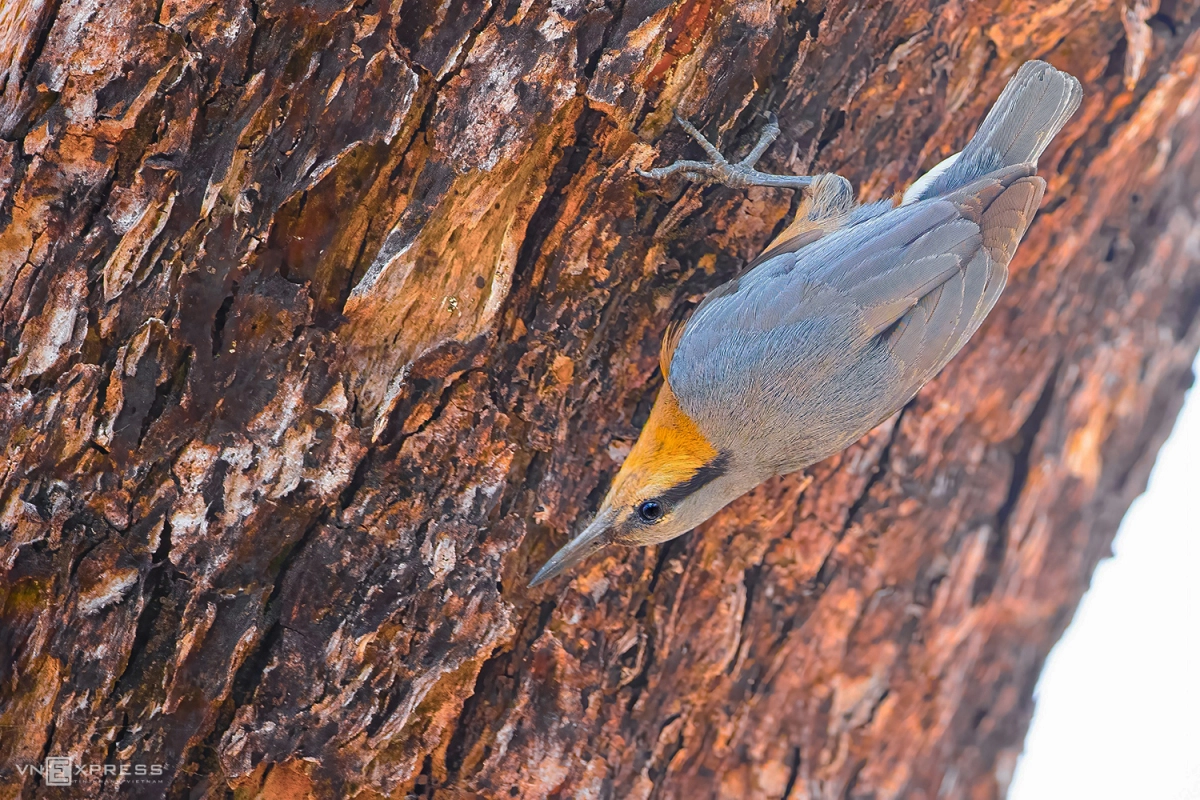
Image: Vo Rin/Nguyen Thuy Linh
One of the impressive birds in Yok Don is the white-fronted scarecrow. This is a small owl, about 20 cm long, that hunts during the day. The bird has dense white eyebrows, prominent yellow eyes, a gray-brown upper body with many white spots, and a white lower body with many brown stripes on the chest.
The Burmese kite is a common settled species in Yok Don, with a wingspan of 51 - 71 cm. The bird usually perches high on dry trees and when it swoops to the ground, the tick scales its tail from side to side, habitat in mountainous forest areas, with an altitude of nearly 2,500 m and nests from January to October.
Photographers shared that visitors who want to watch and hunt birds must wake up early to prepare their luggage and be ready at 5:30, the best time of the day to see birds.
According to VnE
